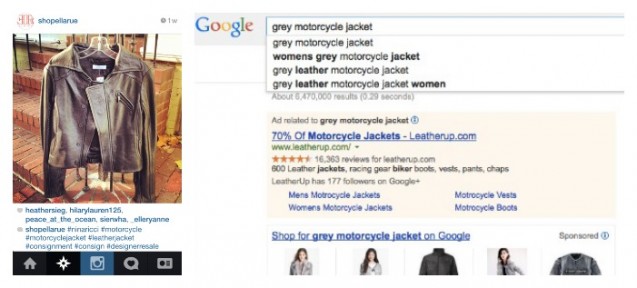I’m sure a lot of people would argue that it’s the other way around – that search’s future is social. Either way, the two fields are converging, and with billions of dollars riding on them, it’s going to be important to address the two as a dynamic duo.
To understand why the future of social is search, let’s look at why search has been turning its eye toward social. Search is all about findability. Whether paid or organic, the real goal of search is to be found by your target audience, and hopefully have them take a secondary action. That action may be as simple as a share or like, or as complex as moving down the funnel into a lead and then to a purchase. Social has provided an exceptional way for people, ideas and content to be found.
That said, social is a busy place. Multiple channels, millions of users, and a deluge of content mean the days of simple social findability are over. While networks rush to create filters, surface content they think you’ll find interesting, and make more relevant connections, marketers need to focus on being found from other angles. You can’t change the algorithms that Facebook, Google, or other organizations put in place – so what can you do?
You can create the content that is ever-present when people search for it.
What does that mean? Several things…
1. Focus on Phrases, Not Keywords
People are seeing things on social media, news articles, and even billboards and commercials and then searching for it later. Thanks to many of Google’s advances, they’re not typing in a single word most of the time, they’re writing an entire phrase, or even a description of something they saw.
Monitor the phrases that are included when people talk about your products and brands on social, and understand how it affects your content decisions.
A good example is viewing an Instagram photo of a new jacket that has been posted to Facebook. Later, when you are waiting in line at a store or sitting at your desk, searching for “short gray motorcycle jacket with collar.” You may not know or remember the brand but you like the content you saw and decided to search for it at a more convenient time.
2. Look for Concepts, Not Concrete Terminology
While this may sound like a repeat of number one, you should focus on discussions relevant to your brand. Here you will find a wealth of information to connect with existing audiences and identify new audiences. This means you can be creating content that touches on current topics. While many people think they’re already doing this, I’ll point out an example of what this looks like in practice.
Let’s use Nike as our example, and specifically Nike running shoes.
A traditional approach will include monitoring conversations for: Nike, run (and variations like running and runner), shoes, and cross training; as well as competitors like Asics, Reebok, etc. In the past few years we’ve evolved to monitoring for things such as: Marathon, trails, and road race.
The next evolution should focus on the conversations that are happening around running and running shoes on social, and expand Nike’s awareness on things like: Carbohydrates, personal trainer, joint pain, weather predictions, etc. These come from tweets, Instagram photos and Facebook posts like this one.
For example, Nike could do marathon-inspired recipes and content, along with shoe suggestions for users that are searching for pre-run meals. The company could also display store information alongside searches for local personal trainers. Another great way to engage would be to serve up content for cushioning running shoes when people mention runner-related injuries.
3. Create Content That is Socially Searchable & Consumable
Knowing people are going to be on social channels and inundated with lots of “stuff” is only half the battle. Now you need to make sure you’re creating content that works well for those mediums and is also easily found when users search.
Let’s look at an example from my company, GinzaMetrics. Each week, we do a Google Hangout called FOUND Fridays. FOUND Fridays discuss search and content marketing, and feature guests that are experts in various realms of the industry. Topics are gathered based on what’s trending that week, and specifically mined from conversations being had on social media.
The Hangout is conducted live, giving the audience a chance to tweet questions to #FOUNDFriday. It is then posted to:
- YouTube
- SlideShare
- Our Blog
The Google Hangout is publicized on Google+, Twitter, LinkedIn, and Facebook to the GinzaMetrics audience, as well as the audience of whomever is guest speaking.
The YouTube video provides an opportunity for increased visibility on Google as well as transcription.
SlideShare is great because you can pull key points and turn them into an illustrated, easily consumable format. SlideShare also has great SEO value with a full transcript included below that is findable by search engines.
The blog post includes links to the SlideShare, YouTube video, and notes from previous FOUND Friday efforts, as well as links to other referencing sources – garnering even more findability. Each of these items are not only shared socially, but findable via social media as well.





